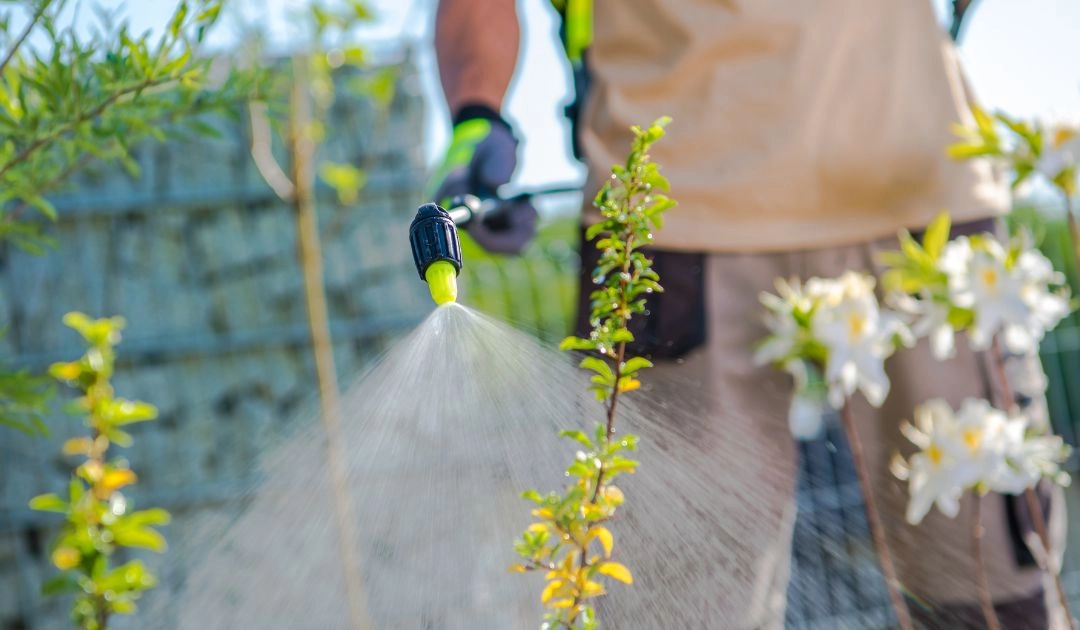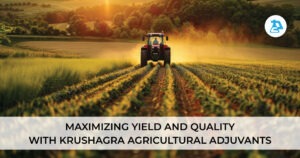Biopesticides are important in agriculture because they offer a safer and more environmentally friendly alternative to chemical pesticides. Biopesticides are substances that come from living things like plants, bacteria, fungi, and insects. The efficacy of biopesticides against various pest species or in various environmental settings may vary. Compared to chemical pesticides, some biopesticides may need several applications or have a more limited range of control. So it’s crucial to have a solid understanding of the target pest and carefully choose the right biopesticide.
Why choose Biopesticides over Chemical Pesticides:
Biopesticides are a better option than chemical pesticides in many agricultural and pest control situations due to their numerous advantages. Here are some major advantages of using biopesticides:
Reduced environmental impact: Since biopesticides are often made from natural ingredients, their negative impacts on the environment are kept to a minimum. They frequently provide less of a threat to non-target creatures including helpful insects, birds, and mammals. Farmers can lessen their negative effects on ecosystems, lessen soil and water contamination, and maintain biodiversity by utilizing biopesticides.
Safer for human health: Generally less harmful to humans, biopesticides pose fewer health risks to farmers, agricultural workers, and consumers, making them safer for human health. They have little to no toxic residues in their crops, which improves food safety and lessens the risk to human health from exposure to pesticides.
Targeted Pest Control: Biopesticides frequently have specialized modes of action that target particular pests or pest life stages. This makes pest management more accurate and focused while also having less of an effect on species that aren’t the target. While protecting beneficial insects, pollinators, and natural adversaries, biopesticides can efficiently control pest populations.
Resistance Management: Regular use of chemical pesticides can result in the emergence of insect populations that are resistant to the pesticides, rendering them useless. The use of biopesticides with various modes of action provides an additional means of preventing or managing resistance. Farmers can diversify their control methods and lower the danger of resistance development by including biopesticides into their pest management strategy.
Integrated Pest Management (IPM): Biopesticides are a crucial part of integrated pest management (IPM) strategies. Farmers can use a comprehensive and sustainable approach to pest management by integrating different pest management strategies with biopesticides, such as cultural controls, biological controls, and monitoring. IPM prioritizes long-term prevention, a decline in pesticide use, and economic viability while reducing any unfavorable effects on the environment.
Shorter Pre-harvest intervals: Pre-harvest intervals, or the amount of time needed between the last application and crop harvest, are frequently shorter with biopesticides. As a result, farmers can use biopesticides closer to harvest without exceeding residual restrictions, guaranteeing adherence to rules governing food safety.
Compatible with Organic Farming: Numerous biopesticides are permitted for use in systems that support organic farming. They are compliant with organic standards and can be utilized in a natural pest control strategy. Biopesticides give organic farmers useful tools for controlling pests while upholding the standards for organic certification.
Sustainability Factor:Agriculture that is more environmentally and socially responsible because of the growing emphasis on sustainable agricultural methods is done so with the help of biopesticides. Biopesticides support sustainable practices that safeguard natural resources, advance biodiversity, and uphold ecosystem health by decreasing reliance on chemical pesticides.
How to choose the Right Biopesticide for Specifically Controlling Sucking Pests in Fruits Corps:
It can be difficult to manage sucking pests in fruit crops, but biopesticides provide a safer and more sustainable alternative to chemical insecticides. Biopesticides are substances that come from living things like plants, bacteria, fungi, and insects. They function by interfering with pests’ life cycles or by directly influencing their behavior. Here is a selection guide for the best biopesticide to manage sucking pests in fruit crops:
Identification of pests: Identify the particular sucking pests because several biopesticides work against them. Find the sucking pests, such as aphids, whiteflies, thrips, or mites, that are harming your fruit crops. You can select the best biopesticide by being aware of the specific pest species.
Recognize the pests’ life cycles: Discover the behavior and life cycle of the sucking pests. Some biopesticides concentrate on particular life stages or interfere with the pests’ breeding habits. Your decision to use a biopesticide will be influenced by your understanding of the biology of the pest.
Product Research: Research the biopesticides that are readily available and effective at preventing sucking pests from damaging fruit harvests. Look for products with labels that are specific to your crop and pest. Aspects like effectiveness, target pests, mode of action, and compatibility with integrated pest management (IPM) programs should be taken into account.
Mode of Action: Distinct biopesticides have distinct mechanisms of operation. While some may smother or dehydrate the pests, others may interfere with their ability to feed or reproduce. Choose a biopesticide that focuses on the precise mode of action needed to effectively control the sucking pests in your fruit crops.
Compatibility with Beneficial Organisms: Consider the effect of the biopesticide on beneficial organisms, such as pollinators or the pests’ natural adversaries, when determining the biopesticide’s compatibility with other living things. Seek out biopesticides with little to no negative effects on beneficial insects, bees, birds, or other organisms that contribute to the environment of your fruit crop.
Residual Effects: Evaluation of the biopesticide’s residual effects is required. While some biopesticides have shorter persistence, others may break down more quickly and leave less residue. Think about the duration between harvests that must pass following application and any usage restrictions that may apply in the days leading up to harvest.
Application process and time frame: Analyze whether using the biopesticide in your system of fruit crops is practical. Take into account elements including simplicity of application, equipment needs, and compatibility with your current pest management techniques. To optimize effectiveness, make sure you adhere to the advised application period for the individual insect and crop.
Regulatory considerations: Research local biopesticide usage laws and restrictions. Make sure the biopesticide you choose has been registered and given the go-ahead for use in your area. To ensure the product is used legally and safely, regulatory requirements must be followed.
Field tests and suggestions: To learn about their experiences with various biopesticides for managing sucking pests in fruit crops, talk to local agricultural extension offices, seasoned producers, or agricultural consultants. Field tests and recommendations from reliable sources can offer helpful information and aid in your decision-making.
IPM strategy (Integrated Pest Management): Biopesticides perform best when included in a comprehensive IPM program. As part of a comprehensive approach that incorporates cultural practices, monitoring, and other pest management techniques, take into account employing biopesticides. Your pest management efforts will be more effective and long-lasting if you combine several different control approaches.
Choosing the Right Biopesticide: A General Idea
The process of choosing the right biopesticide involves considering several factors to ensure its effectiveness and compatibility with your pest management goals. Here are some key steps to help you choose the right biopesticide. By following these steps and considering the specific needs of your pest management program, you can choose the right biopesticide to effectively control pests while minimizing the impact on the environment and human health.
- Identify the target pest : Find the exact pest that needs to be controlled.
- Recognize the biology and behavior: By learning about their life cycle, feeding preferences, and behavior.
- Evaluate efficiency: Review data on the performance of various biopesticides, then assess efficacy and effectiveness.
- Mode of action: Take into account how the biopesticide manages the target pest.
- Consider the conditions for applications: Analyze whether using the biopesticide in your system is practical.
- Compatibility with integrated pest management (IPM): Integrate the chosen biopesticide into your entire pest control plan to ensure compatibility with IPM.
- Safety and environmental considerations: Make that the biopesticide is safe to use and has a minimum effect on creatures that aren’t its target.
- Availability and suitability: Verify the biopesticide’s availability and suitability to see if your area has registered and approved it for use.
- Seek professional advice: Consult with industry professionals to get their recommendations.
- Conduct trial: Test the biopesticide on a limited scale before using it more widely by conducting small-scale trials.




